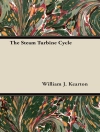The Nobel Prize of 1986 on Sc- ning Tunneling Microscopy sig- led a new era in imaging. The sc- ning probes emerged as a new i- trument for imaging with a pre- sion suf?cient to delineate single atoms. At ?rst there were two – the Scanning Tunneling Microscope, or STM, and the Atomic Force Mic- scope, or AFM. The STM relies on electrons tunneling between tip and sample whereas the AFM depends on the force acting on the tip when it was placed near the sample. These were quickly followed by the — gnetic Force Microscope, MFM, and the Electrostatic Force Microscope, EFM. The MFM will image a single magnetic bit with features as small as 10nm. With the EFM one can monitor the charge of a single electron. Prof. Paul Hansma at Santa Barbara opened the door even wider when he was able to image biological objects in aqueous environments. At this point the sluice gates were opened and a multitude of different instruments appeared. There are signi?cant differences between the Scanning Probe Microscopes or SPM, and others such as the Scanning Electron Microscope or SEM. The probe microscopes do not require preparation of the sample and they operate in ambient atmosphere, whereas, the SEM must operate in a vacuum environment and the sample must be cross-sectioned to expose the proper surface. However, the SEM can record 3D image and movies, features that are not available with the scanning probes.
Содержание
Atomic Force Microscopy in Nanomedicine.- Scanning Probe Microscopy: From Living Cells to the Subatomic Range.- Surface Characterization and Adhesion and Friction Properties of Hydrophobic Leaf Surfaces and Nanopatterned Polymers for Superhydrophobic Surfaces.- Probing Macromolecular Dynamics and the Influence of Finite Size Effects.- Investigation of Organic Supramolecules by Scanning Probe Microscopy in Ultra-High Vacuum.- One- and Two-Dimensional Systems: Scanning Tunneling Microscopy and Spectroscopy of Organic and Inorganic Structures.- Scanning Probe Microscopy Applied to Ferroelectric Materials.- Morphological and Tribological Characterization of Rough Surfaces by Atomic Force Microscopy.- AFM Applications for Contact and Wear Simulation.- AFM Applications for Analysis of Fullerene-Like Nanoparticles.- Scanning Probe Methods in the Magnetic Tape Industry.












